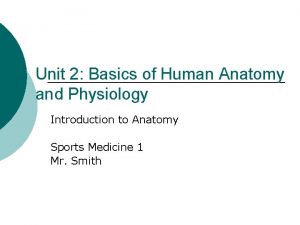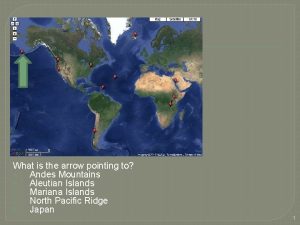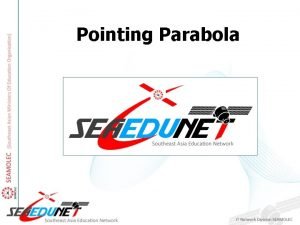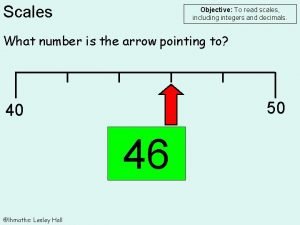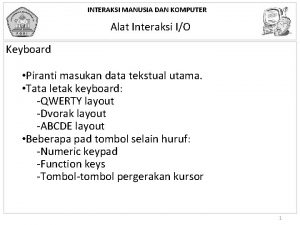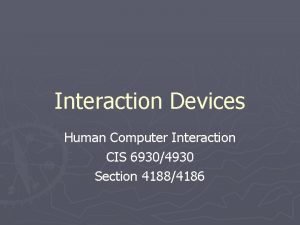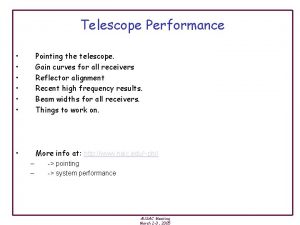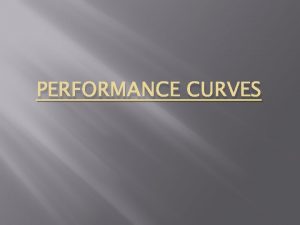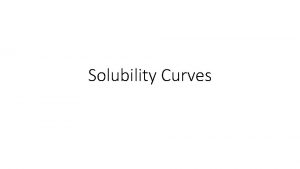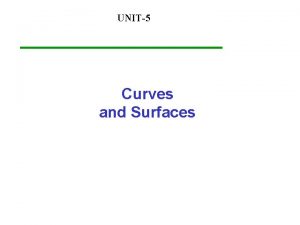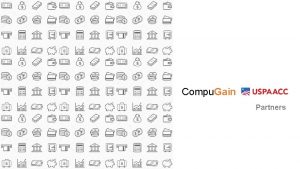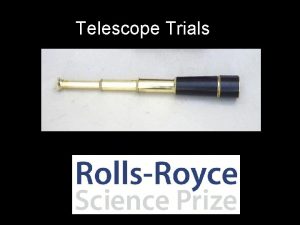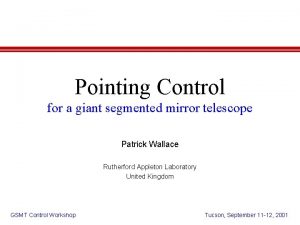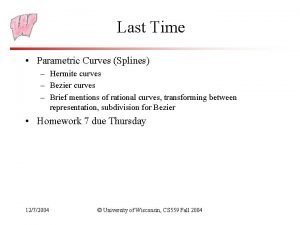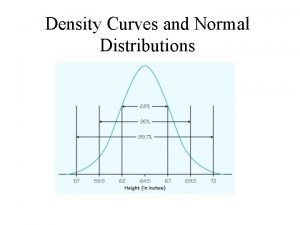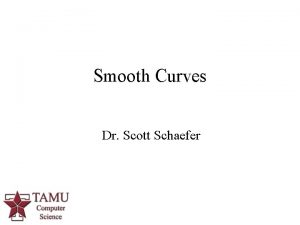Telescope Performance Pointing the telescope Gain curves for





















- Slides: 21

Telescope Performance • • • Pointing the telescope. Gain curves for all receivers Recent high frequency results. Beam widths for all receivers. Things to work on. • More info at: http: //www. naic. edu/~phil – – -> pointing -> system performance NAIC Visiting Committee Meeting February 15 -16, 2005

Pointing the Telescope • • To point the telescope you use: – Pointing model – Azimuth, za drive systems. – Turret drive system. – 6 Distomats (laser rangers) – Tiedown control system. – Temperature sensor on the platform. – Tertiary drive system (installed but not in use). Beam widths of receivers range from: • 900 arc seconds 327 MHz • 28 arc seconds at 10 GHz 1/8 inch motion at the horn is 5 arc seconds on the sky. • Make sure that any errors are repeatable. • NAIC Visiting Committee Meeting February 15 -16, 2005

The pointing model • • 13 term model in az and za with a za lookup table. Latest model created may 04 after: – Alfa added (2000+ lbs) – New compressors on dome (450*4 lbs) – Kevlar cables added to stiffen feed tower. – Dome side rollers tightened on 1 side, loosened on the other. Model history (errors in arc seconds). Date Az err asec Za err asec Total asec 1998 3. 82 2. 37 4. 49 1999 5. 4 3. 1 6. 2 2000 5. 68 3. 45 6. 65 2003 5. 38 3. 48 6. 41 2004 4. 20 2. 41 4. 84 NAIC Visiting Committee Meeting February 15 -16, 2005

The distomats and tiedowns • • • The distomats and tiedowns correct for temperature variation. 6 distomats (around the rim road) are used to measure the position of the platform. Tiedown cables connect each platform corner to a computer controlled jack in the bowl. Operation: – The distomats measure the average platform height every two minutes. – The computers then drive the tiedowns so the average platform height remains at a fixed value. We keep the average height of the platform fixed. We do not keep the platform level. Plot shows platform height 05 feb 05. NAIC Visiting Committee Meeting February 15 -16, 2005

PL Platform hght vs hour NAIC Visiting Committee Meeting February 15 -16, 2005

Distomat failure … • The distomats fail if it is raining, or if the platform has tilted enough so that the targets are no longer in the distomat beam. • On failure the computer switches to a temperature sensor on the platform. The differential temperature change from the last good reading is then used to control the tiedowns. • A 5 deg F change will move the platform 1 inch. NAIC Visiting Committee Meeting February 15 -16, 2005

Tiedown failure • • Large platform tilts and higher temperatures cause a tiedown cable to go slack. On 27 may 04 tension in td 4 was lost during a calibration run: – 10 Am, 84 deg. F, za=16. 5 az=155. – The td 4 jack still had about 8 inches of throw. • The plot shows the pointing error became > 85 arc seconds. • The problem is magnified because the computer continues to move the 3 jacks (but only two of them are now moving the platform). This causes the platform to tilt even more. • Day/evening observing is affected by this. Dome weight is the main culprit. NAIC Visiting Committee Meeting February 15 -16, 2005

Pnt err when td 4 looses tension NAIC Visiting Committee Meeting February 15 -16, 2005

Pre 2004 gain Curves NAIC Visiting Committee Meeting February 15 -16, 2005

Curvature of the hi freq gain curves • • The curvature in the high frequency gain curves comes from collimation and focus errors that are a function of az and za. A 1 lambda focus error is a 3 db loss in gain. At 10 Ghz 3 cm is 3 db Theodolite survey Jul 03 after shimming NAIC Visiting Committee Meeting February 15 -16, 2005

Recent hi freq measurements • Latest reflector adjustments: – Tertiary: 12 oct to 30 oct 04 – Secondary: 7 jun to 29 jun 04 – Primary: nov 04 to jan 05 • • Data taken 01 dec 04 thru feb 05 The plots contain: – Gain (K/Jy) – Tsys (K) – SEFD (Jy) – Average beamwidth (Asecs) A single freq/rcvr is plotted versus za. Color/symbols are different sources. • • NAIC Visiting Committee Meeting February 15 -16, 2005

PL Gtsb cb 5000 NAIC Visiting Committee Meeting February 15 -16, 2005

PL Gtsb cbh 7200 NAIC Visiting Committee Meeting February 15 -16, 2005

PL Gtsb xb 9000 NAIC Visiting Committee Meeting February 15 -16, 2005

• • • System performance vs freq. Za range limited to 5 -14 deg 4 th order poly fit to data Table contains median values Scatter from optics. Rcv Gain K/Jy Tsys K Sefd Jy Cb 4500 8. 6 29. 0 3. 4 Cb 4860 8. 7 29. 9 3. 4 Cb 5000 8. 5 30. 6 3. 6 Cb 5400 8. 1 34. 5 4. 3 Cbh 6600 6. 0 26. 8 4. 5 Cbh 6900 5. 7 25. 6 4. 6 Cbh 7200 5. 1 24. 1 4. 6 Cbh 7400 5. 0 24. 4 4. 8 Xb 8500 5. 0 27. 9 5. 8 Xb 8800 5. 0 28. 4 5. 9 Xb 9000 5. 0 29. 2 6. 1 Xb 9200 5. 0 30. 3 6. 3 NAIC Visiting Committee Meeting February 15 -16, 2005

Beam widths vs. wavelength − − − Half. Power. Beam. Width = K x lambda/Diameter HPBW is not sensitive to Cal errors or Flux errors. HPBW is sensitive to: extended source size, focus and surface errors. The plots show HPBW measured during 2004 (11600 points). The illumination lets you trade Tsys for Gain. Observations: – The dipole feeds have a larger illumination than the horns. – SBN, CBH horns are under illuminating the dish/tertiary. This gives a smaller Tsys at the expense of the gain. − The tertiary skirt would let us increase the illumination of the tertiary without a large increase in Tsys. It would also lower Tsys for those receivers that are over illuminating the tertiary. NAIC Visiting Committee Meeting February 15 -16, 2005

NAIC Visiting Committee Meeting February 15 -16, 2005

NAIC Visiting Committee Meeting February 15 -16, 2005

NAIC Visiting Committee Meeting February 15 -16, 2005

NAIC Visiting Committee Meeting February 15 -16, 2005

Things to work on 1. The dome weight is causing the tiedown/distomats to fail. We need to: – Make the load cell tension measurements more robust – When low tension in 1 tie down, disable tracking of average height. – Get the tertiary drive system online. Use it to change the focal length 2. Install the tertiary screen so that receivers that over illuminate the tertiary do not have such a large Tsys (of course this adds weight!!) 3. Measure the pitch/roll/focus errors of the current configuration and then make a new model to try and correct the pitch, roll, focus errors. 4. Continue monitoring the system performance of all receivers for maintenance purposes. NAIC Visiting Committee Meeting February 15 -16, 2005
 Telescope pointing model
Telescope pointing model A handheld pointing device
A handheld pointing device Dorsiflexion
Dorsiflexion What is the arrow pointing to?
What is the arrow pointing to? Normosefali adalah
Normosefali adalah Contoh indirect pointing devices
Contoh indirect pointing devices Azimut parabola
Azimut parabola Metacommentary example
Metacommentary example Output
Output A pointing device
A pointing device Nbyf uftu sfts sfrs
Nbyf uftu sfts sfrs What is the arrow pointing to
What is the arrow pointing to Contoh indirect pointing devices
Contoh indirect pointing devices Pointing devices in hci
Pointing devices in hci The octagon shape is used exclusively for:
The octagon shape is used exclusively for: Identify arrows pointing to bonding electrons.
Identify arrows pointing to bonding electrons. Difference between lytic and lysogenic cycle
Difference between lytic and lysogenic cycle Past pointing test positive
Past pointing test positive Support implementation
Support implementation Angle sum of polygon
Angle sum of polygon Direct control pointing devices
Direct control pointing devices Flush grooved pointing
Flush grooved pointing


